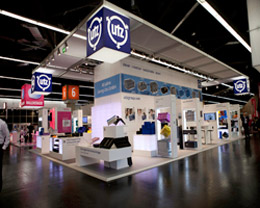Exactly about Gene Transfer and Genetic Recombination in Bacteria
The following points highlight the 3 modes of gene transfer and hereditary recombination in germs. The modes are: 1. Transformation 2. Transduction 3. Bacterial Conjugation.
Mode number 1. Change:
Historically, the breakthrough of change in germs preceded one other two modes of gene transfer. The experiments conducted by Frederick Griffith in 1928 suggested when it comes to very first time that a gene-controlled character, viz. development of capsule in pneumococci, could possibly be used in a non-capsulated selection of these germs. The transformation experiments with pneumococci fundamentally resulted in a discovery that is equally significant genes are constructed with DNA.
During these experiments, Griffith utilized two strains of pneumococci (Streptococcus pneumoniae): one with a polysaccharide capsule creating ‘smooth’ colonies (S-type) on agar dishes that was pathogenic. One other stress ended up being without capsule creating that is‘rough (R-type) and had been non-pathogenic.
Once the living that is capsulated (S-bacteria) were inserted into experimental pets, like laboratory mice, an important percentage of this mice passed away of pneumonia and live S-bacteria could be separated through the autopsied pets.
Once the non-capsulated living pneumococci (R-bacteria) were similarly inserted into mice, they stayed unaffected and healthier. Additionally, whenever S-pneumococci or R-pneumococci had been killed by temperature and injected individually into experimental mice, the pets would not show any illness symptom and stayed healthier. But a result that is unexpected experienced whenever a combination of residing R-pneumococci and heat-killed S-pneumococci had been inserted.
A significant wide range of inserted pets passed away, and, surprisingly, residing capsulated S-pneumococci might be isolated through the dead mice. The test produced evidence that is strong favor associated with summary that some substance arrived on the scene from the heat-killed S-bacteria within the environment and ended up being taken on by a number of the residing R-bacteria transforming them towards the S-form. The trend had been designated as change and also the substance whoever nature ended up being unknown during those times ended up being called the changing principle.
With further refinement of change experiments completed afterwards, it absolutely was observed that transformation of R-form to S-form in pneumococci could be carried out more directly without involving laboratory pets.
An overview of the experiments is schematically drawn in Fig. 9.96:
At that time whenever Griffith yet others made the transformation experiments, the chemical nature for the changing concept had been unknown. Avery, Mac Leod and McCarty used this task by stepwise elimination of various the different parts of the cell-free extract of capsulated pneumococci to discover component that possessed the property of change.
After many years of painstaking research they discovered that a very purified test associated with the cell-extract containing for around 99.9per cent DNA of S-pneumococci could transform regarding the average one bacterium of R-form per 10,000 to an S-form. Additionally, the ability that is transforming of purified test ended up being damaged by DNase. These findings produced in 1944 supplied the very first conclusive proof to show that the genetic material is DNA.
It absolutely was shown that the hereditary character, just like the capability to synthesise a polysaccharide capsule in pneumococci, might be sent to germs lacking this home through transfer of DNA. The gene controlling this ability to synthesise capsular polysaccharide was present in the DNA of the S-pneumococci in other words.
Hence, change can be explained as a way of horizontal gene transfer mediated by uptake of free DNA by other germs, either spontaneously through the environment or by forced uptake under laboratory conditions.
Correctly, change in germs is known as:
It may possibly be pointed off to avoid misunderstanding that the definition of ‘transformation’ has a meaning that is different utilized in experience of eukaryotic organisms. This term is used to indicate the ability of a normal differentiated cell to regain the capacity to divide actively and indefinitely in eukaryotic cell-biology. This occurs whenever a normal human anatomy cellular is changed in to a cancer tumors cellular. Such change in a animal cellular is because of a mutation, or through uptake of international DNA.
Normal Transformation:
In normal change of germs, free nude fragments of double-stranded DNA become connected to the area regarding the receiver mobile. Such free DNA particles become obtainable in environmental surroundings by normal decay and lysis of germs.
After accessory into the microbial area, the double-stranded DNA fragment is nicked plus one strand is digested by microbial nuclease causing a single-stranded DNA which can be then drawn in by the receiver by the energy-requiring transportation system.
The capability to use up DNA is developed in germs if they are within the belated logarithmic stage of development. This cap cap ability is named competence. The single-stranded incoming DNA can then be exchanged with a homologous portion of this chromosome of a receiver mobile and incorporated as part of the chromosomal DNA leading to recombination. In the event that DNA that is incoming to recombine because of the chromosomal DNA, it really is digested because of the mobile DNase which is lost.
In the act of recombination, Rec a kind of protein plays a role that is important. These proteins bind to your single-stranded DNA as it comes into the receiver mobile developing a layer across the DNA strand. The DNA that is coated then loosely binds into the chromosomal DNA which will be double-stranded. The DNA that is coated and also the chromosomal DNA then go in accordance with one another until homologous sequences are attained.
Upcoming, RecA kind proteins earnestly displace one strand associated with chromosomal DNA causing a nick. The displacement of just one strand associated with the chromosomal DNA calls for hydrolysis of ATP in other words. it really is a process that is energy-requiring.
The DNA that is incoming strand incorporated by base-pairing utilizing the single-strand of this chromosomal DNA and ligation with DNA-ligase. The displaced strand associated with the double-helix is digested and nicked by mobile DNase activity. These are corrected if mexican dating sites there is any mismatch between the two strands of DNA. Thus, change is finished.
The sequence of activities in normal transformation is shown schematically in Fig. 9.97:
Natural change happens to be reported in lot of species that are bacterial like Streptococcus pneumoniae. Bacillus subtilis, Haemophilus influenzae, Neisseria gonorrhoae etc., although the sensation just isn’t frequent among the germs connected with humans and pets. Current findings suggest that normal change among the list of soil and water-inhabiting germs may never be therefore infrequent. This shows that transformation might be a mode that is significant of gene transfer in general.
 Zurück zur Artikelübersicht
Zurück zur Artikelübersicht
















Schreibe einen Kommentar
Du musst angemeldet sein, um einen Kommentar abzugeben.